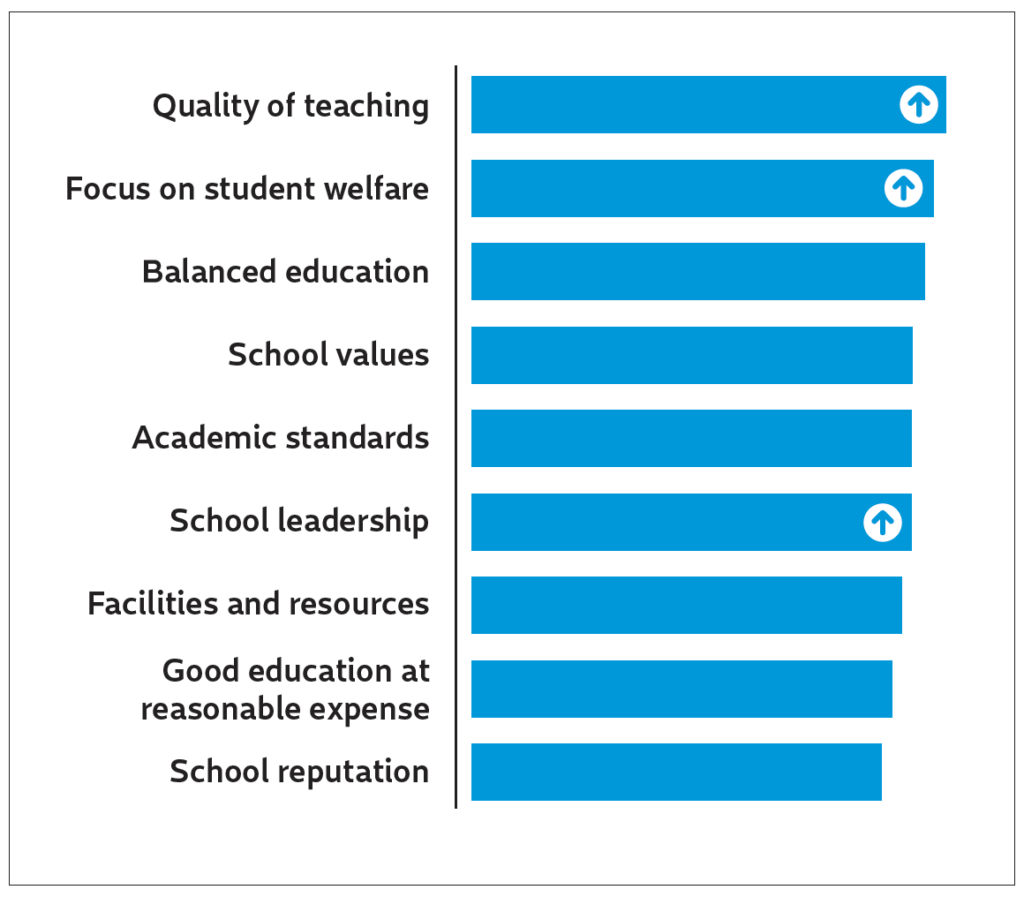Choosing a school for their child is one of the most important emotional and financial decisions parents face today.
MMG Education’s research over many years has revealed the top ten factors that parents consider when choosing a school, with recent results highlighting the areas that increased in importance in the past year.
It will come as no surprise that 2020 was a year in which the quality and continuity of teaching and learning were tested time and again, with home-based learning impacting all schools in all states for a period of time.
MMG’s research has shown that, overall, the response by schools to this challenge was outstanding, with a new ‘norm’ established for parent/teacher relationships. In many cases, new learnings were adopted for school-based teaching, with further initiatives planned by school leaders for 2021.
What, then, has been the impact of 2020 on drivers for school choice, and what further insights have we learned?
Top ten reasons for school choice
The chart below shows the top ten reasons parents choose a school, including indicators of change in 2020. It is worth noting that all these drivers were in the top ten prior to 2020, but the level of importance has increased in three areas, as indicated by the arrows.

Quality of teaching
Quality of teaching is continually ranked as the top reason for school choice. This was further reinforced in 2020 by the attention and support observed by parents (and students) throughout the year.
It is widely accepted, and supported by MMG’s research, that a school’s current parents play a major role as a source of information and referral for prospective parents considering a school for their child.
Parents have strong views as to the quality of teaching, forming these views from a variety of experiences including the following:
- The consistency of high-quality teaching for their child and comparisons with other parents.
- The retention of highly regarded teachers.
- The frequency of changes in teachers, with particular concern of this occurring in the final years of school life.
- The quality and experience of contract or relief teachers.
- The effectiveness of the change process where teaching changes have occurred (communication, handover, briefing).
- Academic results (ATAR/NAPLAN) — arguably not the most effective measure but easily accessible to parents who draw comparisons across schools.
- Proactive advice from teachers if their child’s grades are dropping and, more importantly, what is being planned to address this.
- The provision of teaching and learning experiences tailored to the different needs of each child.
- The ability of the school to meet the needs of the following segments:
- Learning support and learning enrichment. Each group typically focuses on 18 to 20 percent of students, providing for children who need additional support and those who can be extended. Were needs identified as early as possible? Does the school have systems in place? Are teachers trained and experienced? Are parents being kept informed of progress? How effective has the support been?
- Middle order. This typically covers around 60 percent of a school’s students. In the case of larger schools, some of these students fall ‘under the radar’ and may not be receiving the attention parents expect.
There is no doubt that quality of teaching will remain one of the most important school choice (and parent satisfaction) drivers. Ongoing attention is required to positively differentiate your school and further reinforce your value proposition.

Tony Pfeiffer is the Founding Partner of MMG Education, a leader in tailored school stakeholder research and performance benchmarking. Tony served on the board of a leading independent school for over nine years and has decades of corporate experience in senior executive roles. mmgeducation.com.au

